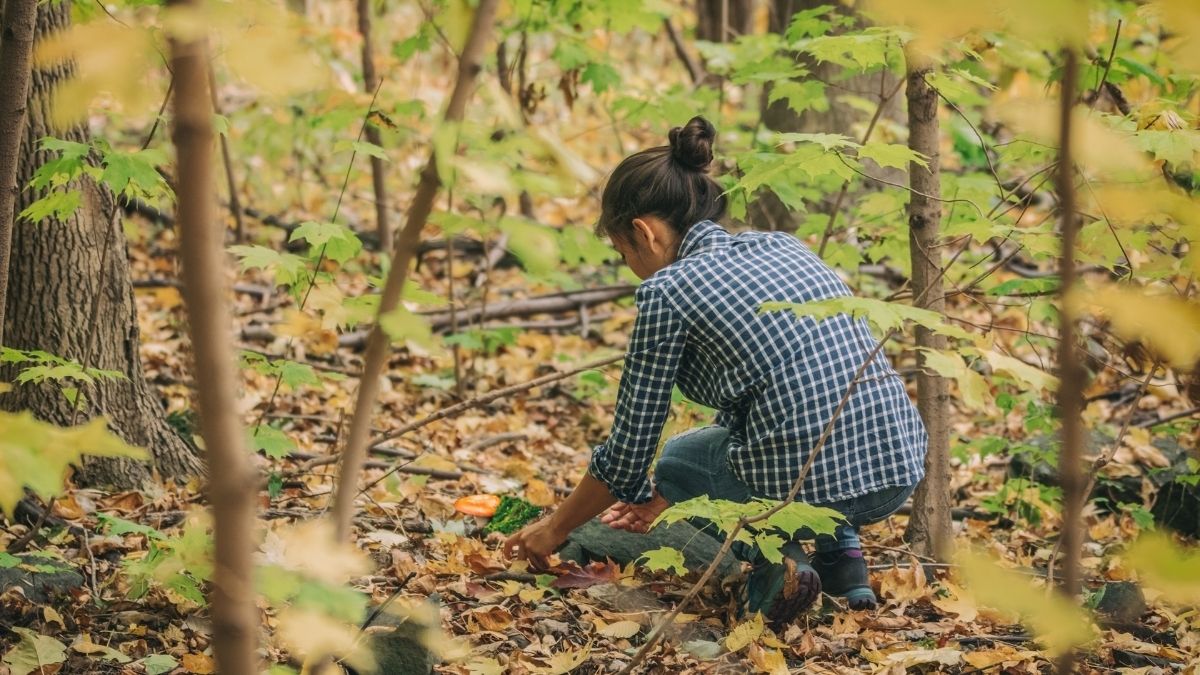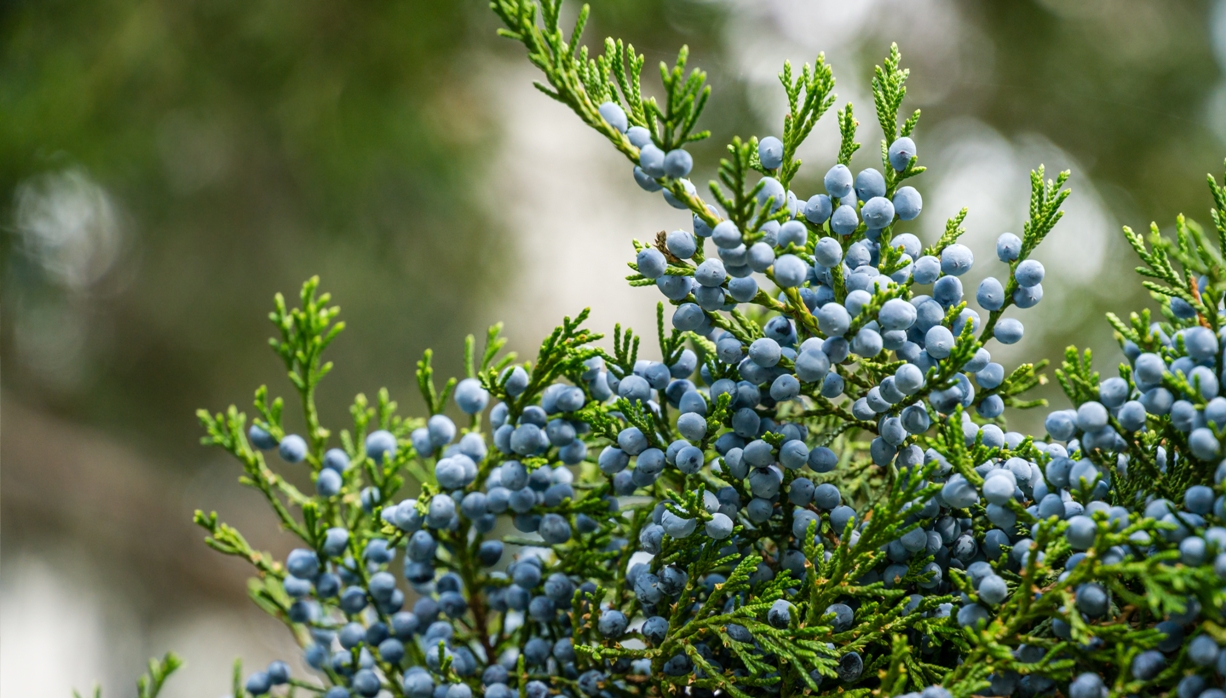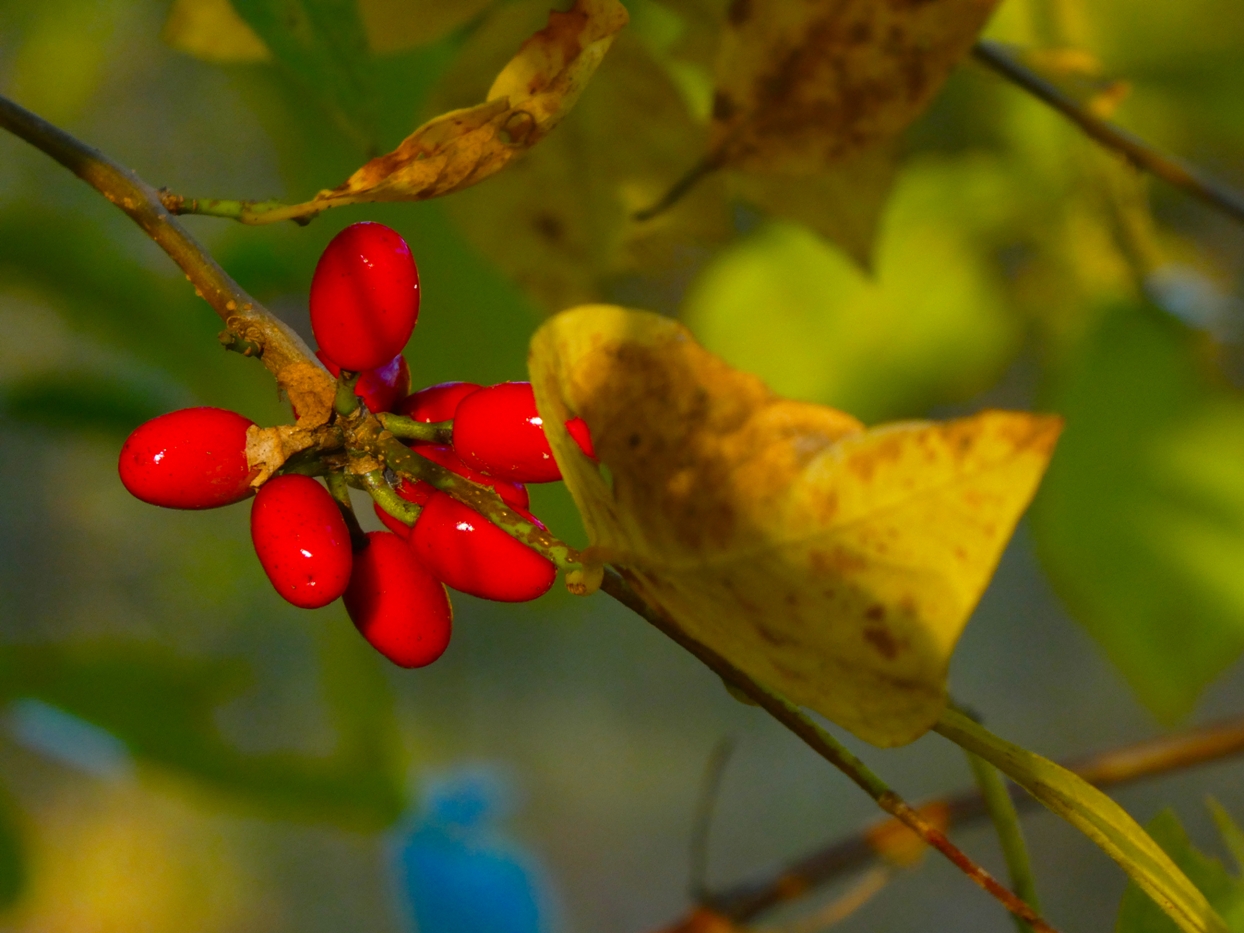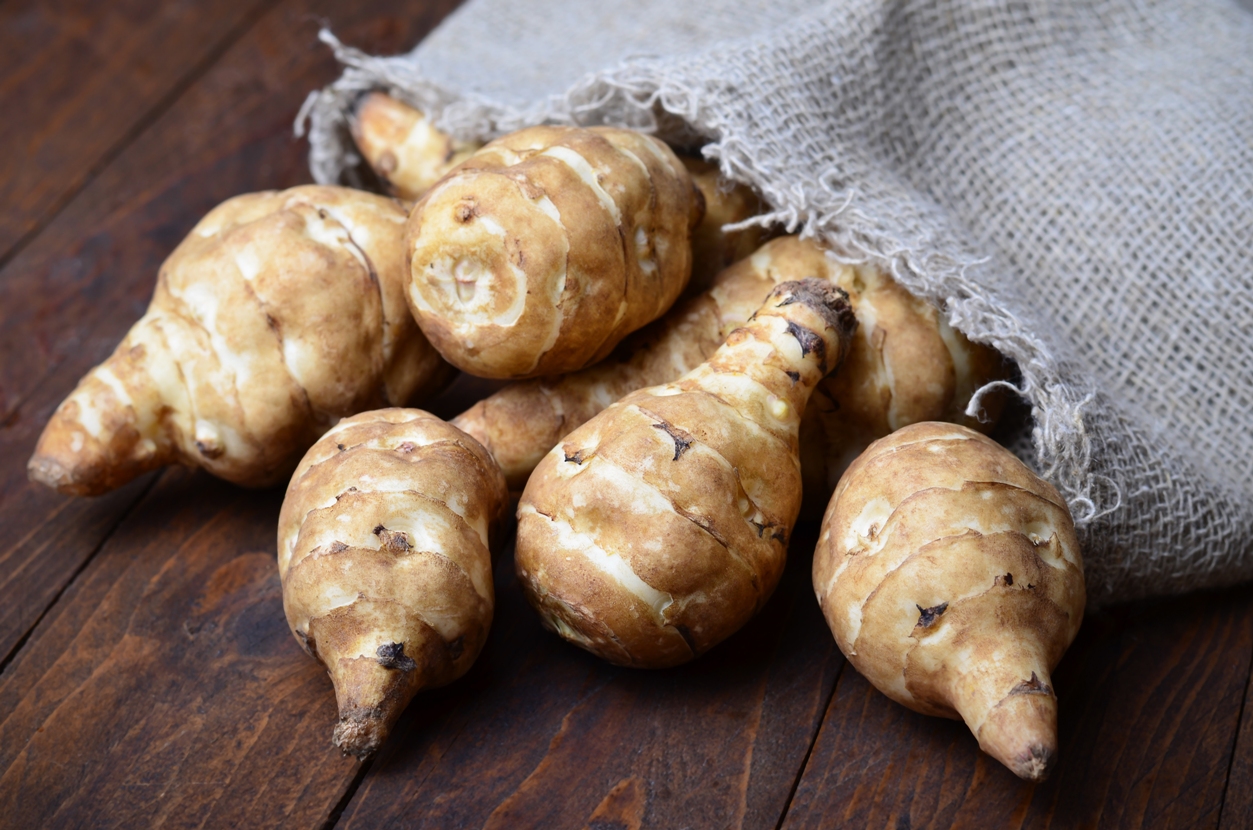Storing Up for Winter with Forageables

Fall is a great time to forage in Virginia.
By Megan Williams
Photos by Shutterstock
When we think of foraging for food, spring often comes to mind: bitter dandelion greens, vivid wild violet, the fiercely sought-after ramps. While spring foraging is wildcrafting at its finest—and a welcome break after the winter’s cold—there is so much more that can be collected throughout the remainder of the seasons.
Fall and winter foraging is all about seeking the hardier ingredients. Roots that have spent the summer nourishing the ground are now perfectly plump and full of flavor. Nuts have drawn up all of a tree’s strength and are falling to the ground practically begging to be picked up by squirrel and person alike. Berries that have seemingly defied the laws of nature brighten trailways even as the temperatures drop.
With a bit of patience and maybe a small shovel in tow, you will be able to benefit from Virginia’s seasonal bounty. Keep in mind to do as little damage to the plant and its environment, to positively identify anything you plan to eat, and make sure you are either on public land open to foraging or have permission to forage on private land.
Trees
Acorns, black walnuts, and hickory
Acorns, walnuts, and hickory are the most easily identifiable edible tree nuts to forage for in the fall.
Simply look for the nuts that have recently fallen to the ground—or even give a few branches a shake to see what falls. Be mindful of any nuts that appear to have darkened or have holes in them, as they may have already become a snack for a critter or two.
It’s important to note, however, that most nuts require a bit of leg work before you can reap the benefits of them. For acorns, they should be washed thoroughly and dried. Once dry, crack them to reveal the meat of the acorn, discarding the shell, and soak them for at least 12 hours in cold water. This is an important step as it releases the tannins and keeps the acorns from tasting bitter. Drain the water after 12 hours, and continue repeating that process until the water is clear. Then, the acorns will be ready to be turned into flour, baked into cakes, or eaten whole.
For walnuts, the green outer layer must first be removed. The flesh will stain your fingers—and anything you touch—black so you may want to wear gloves before processing the walnuts. Once you’ve hulled the walnuts, let them dry by laying them on a flat, ventilated surface for a few days before cracking open.
Hickory nuts, on the other hand, can be eaten right from the shell without any further processing.
Conifer needles
If you’re on a long foraging expedition in the woods, give yourself a quick vitamin C boost with conifer needles. Conifers are evergreen trees and shrubs that have needles instead of leaves and use cones to spread their seeds instead of flowers. Conifers native to Virginia include Eastern white pine, Virginia pine, loblolly pine, longleaf pine, and shortleaf pine, among other pine varieties. All conifer needles, with the exception of those from the poisonous yew tree, are edible.
You can find yourself munching on a few pine needles for a minty-fresh kick, or you can take your needles home with you for a cold-infused tea. Heat will remove the vitamin C content of the conifer needles, though they do make for a lovely hot tea as well, without the added vitamin benefits.
Juniper berries
Juniper berries are most well-known for the bright and spiced flavor that they give to gin. And, while they carry the berry name, they aren’t actually berries at all. Instead, they are tiny cones from the juniper tree.

Juniper berries
There are a dozen or more varieties of juniper that grow across the country, but the most common in Virginia is the Eastern red cedar, which is easily identifiable by its flaky cedar bark and evergreens bursting with dusty blue berries.
Juniper can be used to flavor meats and ferments, and the bloom on the juniper berries can be used to create a wonderfully pungent wild yeast for home brewers.
Berries
Rose hips
Rose hips are the fruit of rose flowers and can persist well into the winter if it’s milder. High in vitamin C, rose hips can be used in teas, jellies, and syrups.
Spicebush berries
Often referred to as Appalachian allspice, spicebush berries—and their leaves and bark—carry quite the kick. It’s been said that Civil War soldiers were known to make a spicebush tea from the berries, leaves, and bark to keep them alert and warm, and it’s easy to see why once you try some for yourself.

Spicebush berries
You can even dehydrate the spicebush berries and grind them up for your own, foraged allspice. It’s perfect for flavoring spice cakes or using as a rub on grilled chicken.
Roots
Jerusalem artichoke/sunchoke
You likely know sunchokes from their bright yellow flowers that pepper roadsides and fields. The towering, five-petaled flower signals that a delicious root is forming just below the surface.
Make a mental note as to where those flowers pop up, and dig just underneath the ground in the fall and winter. There, you’ll find a sunchoke root that is 2-3 inches in length and delicious roasted in the oven just as you would potatoes.

Sunchokes
Chicory
Similarly, you’ll know chicory from the blueish purple flowers that almost resemble dandelions. Underneath those vivid flowers are a savory, rich root that can be cleaned, dried, and roasted for a mouthwatering coffee replacement.
Enjoy an Edible Walk in the Woods
With scissors, a small shovel, and a canvas bag in tow, you’ll be ready for an edible walk in the woods. It’s important to always have permission from the appropriate parties before embarking on a foraging journey. Please note that foraging may not be allowed on public lands—make sure to check the rules for any piece of public land. According to the General Rules and Regulations of Virginia Department of Wildlife Resources (DWR) Wildlife Management Areas (WMAs), “Berry picking and gathering of mushrooms or other fruits is allowed,” but digging and removing roots is not. If you’re a novice, always bring a buddy with you who can easily identify plants and answer any questions you may have. Never forage from roadsides or areas where chemical sprays or fertilizers may have been employed.
To ensure you have a bountiful harvest the next time you return to that location, aim to only forage for 10 percent of what you find in a particular area. This will ensure the plant continues to thrive, and that there’s enough to share with the wildlife as well.
